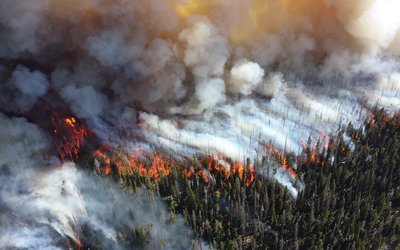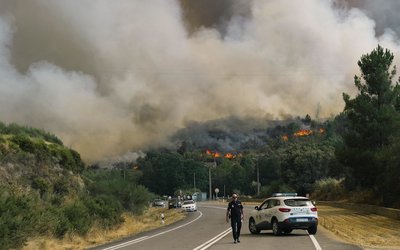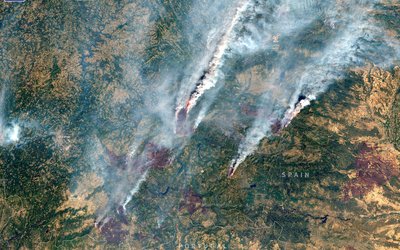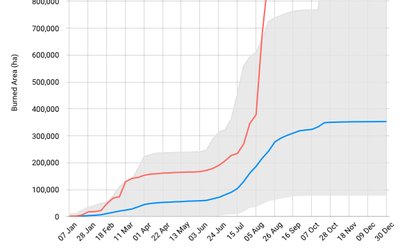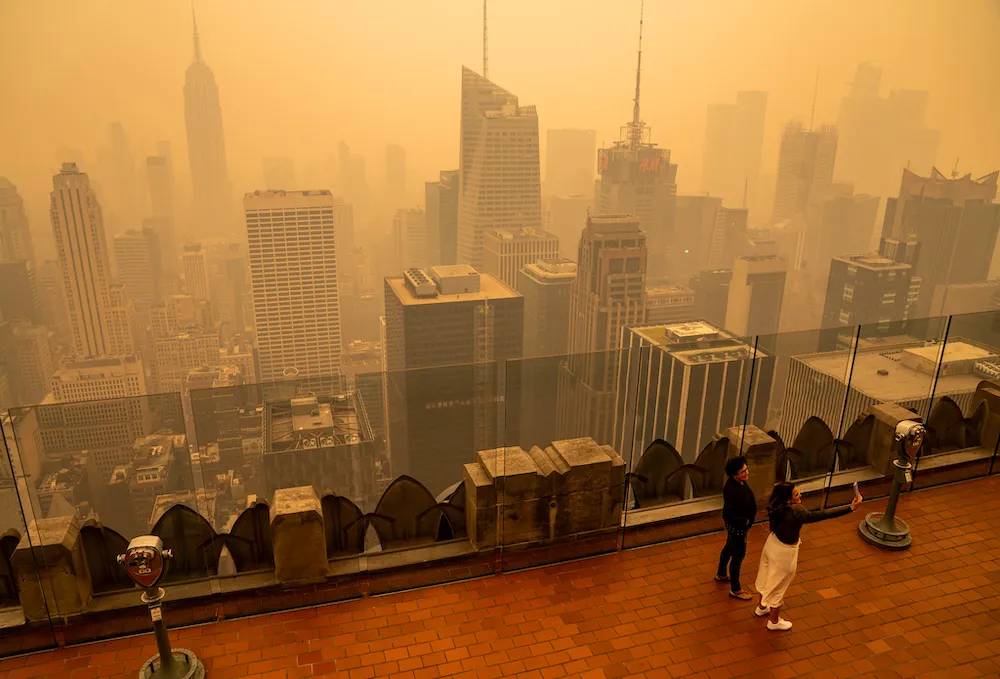
Photo: Smoke from Quebec wildfires pollutes US air in 2023 (source: Anthony Quintano, www.flickr.com)
Wildfire smoke is toxic and travels far. In 2023, an estimated 82,100 people died prematurely from exposure to Canadian wildfire smoke, including 22,400 in Europe.
Toxic Canadian smoke
Wildfire smoke is toxic. Smoke particles smaller than 2.5 micrometre enter the lungs and bloodstream, causing heart disease, cancer and respiratory illnesses. Scientific studies have linked air pollution from wildfires to increased mortality. Besides, wildfire smoke can travel great distances, even cross oceans, and kill people elsewhere on the planet. A study, recently published in the scientific journal Nature, showed that smoke from the wildfires that burned in Canada in the summer of 2023 killed people in the USA and Europe.
These wildfires burned about 4% of the total forest area in Canada, more than 7 times the annual mean burned area for 1983–2022. Smoke from these wildfires was transported across North America and even across the North Atlantic to reach Europe and Asia.
Satellite observations, ground-monitoring measurements, and a model were used to quantify the exposure of people in North America and Europe to these small wildfire smoke particles. Information from previous studies was used to relate this exposure to the impact on human health and estimate the transboundary death toll of Canadian wildfire smoke.
Transboundary smoke exposure
In 2023, 13% of the global wildfire-related exposure to particles smaller than 2.5 micrometre was smoke from the Canadian fires. These emissions in Canada were the highest in at least 20 years, in between 5 to 10 times higher than the annual average for 2003–2022, and at least 3 times higher than in 2021, the year with the next highest emissions.
The smoke plumes from Canada were transmitted eastwards by a westerly airflow, crossed the North Atlantic, and reached Western Europe, especially Spain, Italy and France. About 90% of the Europeans were exposed to increased concentrations owing to the 2023 Canadian wildfires.
The authors of this study estimate that in 2023, wildfires worldwide accounted for an annual mean exposure to these small particles by 1.32 μg per m3. Of this, 13% came from Canada. This may seem a relatively low percentage, but the Canadian smoke spread across the North American continent and was even transported to Europe. In fact, the Canadian fires accounted for more than half of the wildfire smoke exposure along the western coasts of Europe. The extra mean annual exposure in the USA and Europe was 1.49 μg per m3 and 0.41 μg per m3, respectively. For comparison, annual mean exposure in Canada increased by 3.82 μg per m3.
Transboundary health impacts
The impact of the Canadian wildfires on global health was quantified from the number of days in which both (1) the daily mean concentration of small particles exceeded a critical threshold recommended by the World Health Organization (WHO) and (2) half of this concentration was Canadian smoke. Based on these criteria, an estimated 354 million people in North America and Europe were exposed: 38 million Canadians – almost the entire population of Canada –, 267 million people in the USA, and 48 million people in Europe.
The authors of this study estimated the death toll from the 2023 Canadian wildfires. They distinguished between acute deaths due to the exposure to high smoke concentrations, and people dying prematurely from chronic health impacts due to chronic smoke exposure. The estimated death toll of acute deaths is 5,400, including 4,100 in the USA and 1,300 in Canada. The number of people expected to die prematurely was estimated at 82,100, worldwide, including 8,300, 33,000, and 22,400 in Canada, the USA and Europe, respectively. The number for Europe accounts for 0.3% of total all-cause deaths in 2023.
Of course, these results are surrounded by uncertainties, for example regarding the relationship between smoke exposure and chronic health effects and mortality. What this study does show, however, is that large wildfires have far-reaching, even global effects. Wildfire smoke travels far, and so do the health impacts and mortality associated with it.
Source: Zhang et al., 2025. Nature 645: 672-678.

